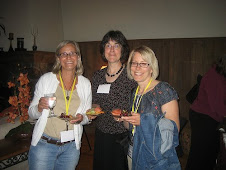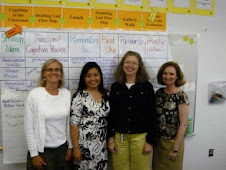My students spent the entire class today learning vocabulary words from the novel, Things Fall Apart, that they begin reading on Monday. The lesson went great for a Friday afternoon.
First, groups of four students created 4-square vocab quilt squares for their assigned 2 or 3 words. Here's the 4-square vocab format:
 They then used their group's two or three assigned words to create a skit incorporating the words. Groups performed the skits for the class, and we used the applause meter to determine the winner.
They then used their group's two or three assigned words to create a skit incorporating the words. Groups performed the skits for the class, and we used the applause meter to determine the winner.To keep the vocabulary celebration going, students participated in "Give one, get one" where they circulated around the room with their vocab square, stopping when the music stopped to pair up and "give one" vocab word (explaining their word), and then they would"get one" vocab word before the music started and they moved around searching for new words to learn.
 For homework over the weekend, I assigned creating a Thinking Map that further illustrates their word from 4-square. Students can create any Thinking Map that they want that illustrates or expands on their assigned vocab word. For example, they could make an analogy on a bridge map, define the word with a circle map, describe the word with adjectives in a bubble map, analyze the causes and effects of the word in a multi-flow map. Click on the double bubble map to the left to take the map to full screen to see a comparison of Kola (the vocab word) with coffee that the students and I created quickly as a model in class today.
For homework over the weekend, I assigned creating a Thinking Map that further illustrates their word from 4-square. Students can create any Thinking Map that they want that illustrates or expands on their assigned vocab word. For example, they could make an analogy on a bridge map, define the word with a circle map, describe the word with adjectives in a bubble map, analyze the causes and effects of the word in a multi-flow map. Click on the double bubble map to the left to take the map to full screen to see a comparison of Kola (the vocab word) with coffee that the students and I created quickly as a model in class today.A follow-up vocab strategy that my students can’t wait to do is to compete in an "I have, who has" vocab contest with the other English 10 classes for the fastest time. I even heard some students state that they were planning on studying words already this weekend.
To use the "I have, who has" strategy, a teacher simply needs to create a circular recitation of vocab words and definitions. One student says, "I have (insert vocab word). Who has (insert definition of another vocab word)?" The student who has the sheet with the vocab word that fits the previous definition responds, "I have----who has?" And so on.









